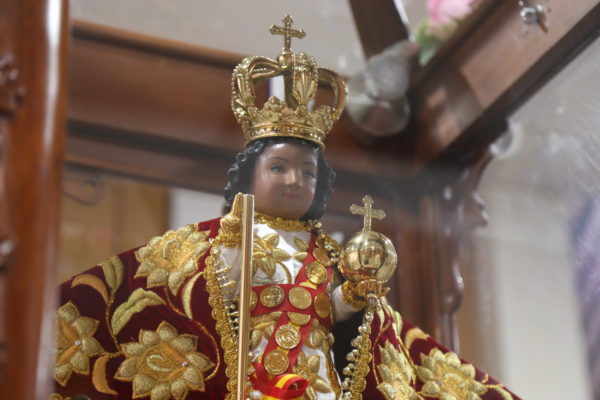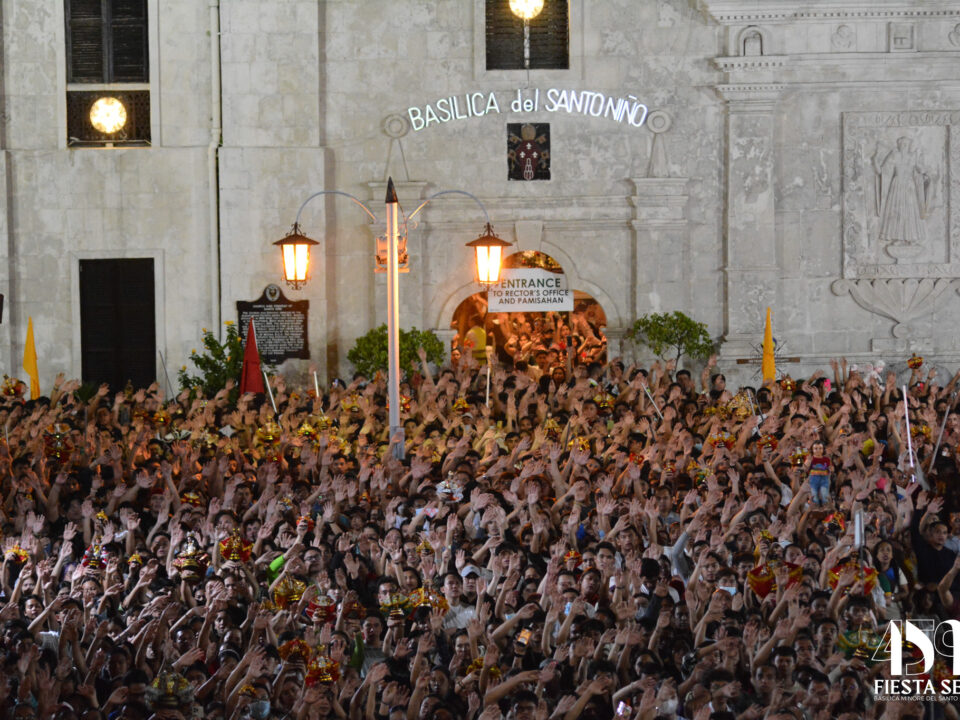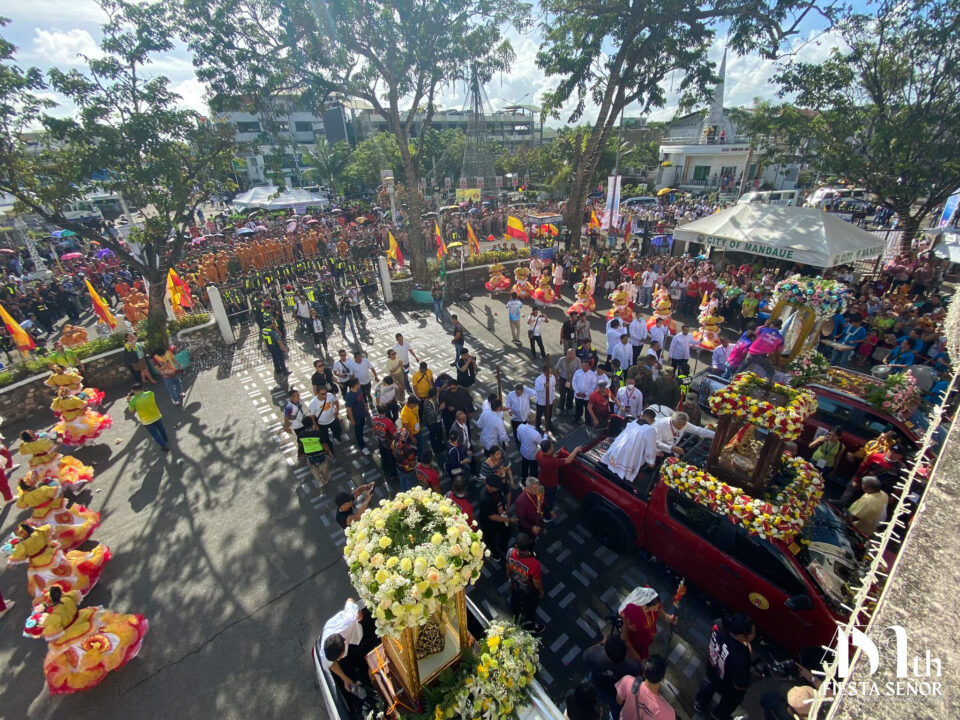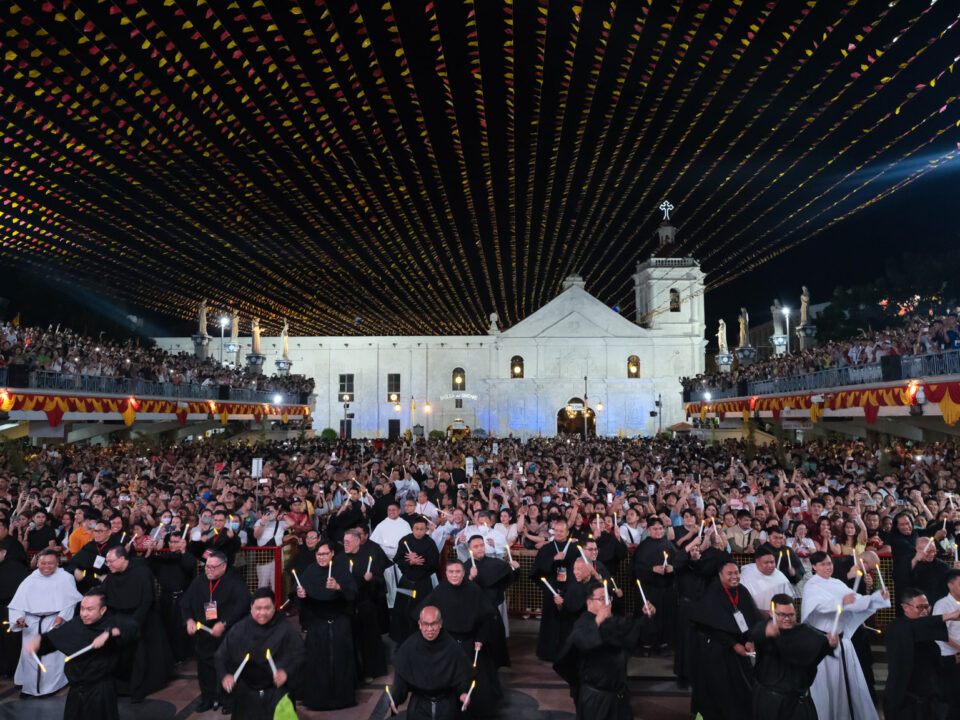What does “VIVA PIT SEÑOR!” and “VIVA SEÑOR SANTO NIÑO!” mean?

The devotion to the Sto. Niño in the Philippines is as old as the history of Christianity in the country. The image of Sto. Niño was given to Queen Juana by Ferdinand Magellan after she was baptized with her husband, King Humabon, in Cebu in 1521.
Eventually, Magellan died after the battle of Mactan. After which, there was no continuity in the spreading of the new religion to the natives of Cebu.
Forty-four years later, the Spaniards returned with Miguel Lopez de Legazpi as head of the expedition and found an image of the Sto. Niño.
A feast day then was dedicated to the finding of the image of Sto. Niño on April 28, 1565. Since then, people celebrate the feast of the child Jesus in honor of His Most Holy name. One particular tradition of the fiesta is the out loud cry of the phrases- “VIVA PIT SEÑOR!” and “VIVA SEÑOR SANTO NIÑO!” This is done repetitively after the mass or during the dancing of the traditional Sinulog in the Basilica or even made as chants of Sinulog contingents. But, what does this really mean?
More often the people are confused or clueless of the meaning of the phrase that is frequently said every time we celebrate the feast of Sto. Niño de Cebu. Below is a list of its definition as explained historically, culturally and biblically.

‘Santo Niño’ means ‘Holy Child’
‘Santo Niño’ is a Spanish word for ‘Holy Child,’ which is a title called to the child Jesus born in Bethlehem, our Savior. When we celebrate the feast of Sto. Niño, we are not celebrating like that of a saint declared by the church. Some people call Sto. Niño as the ‘patron saint’ of Cebu, which is also confusing. This is incorrect because Jesus is not a saint but rather our Lord, King and Savior. We celebrate a feast to Sto. Niño to remember his infancy and childhood that He is indeed to be honored and glorified.
Moreover, ‘patron’ in Spanish means ‘protector’ or ‘defender.’ Our Lord Jesus Christ will and always be our protector. It is only fitting that Sto. Nino is patron or protector to all of us.
Honoring the Sto. Nino is a devotion to the childhood of Jesus. The origin of honoring the Holy Child Jesus dates back to the moment when Jesus was born. The infant Jesus was adored by the lambs and the shepherd who were present when Mary bore Jesus on a manger. The Magis’ story of visiting Jesus and giving of gifts (Mt 2:1-12; Mk 2:1-3; Lk 2:39-52) is more than enough to tell us that at the start of Jesus early life as an infant, He was already praised and adored by all.
The meaning of ‘Pit’
“PIT” is a contraction of the word “sangpit”, which is a Cebuano word for calling out loud a person or God with a particular intention. There is no exact translation for this word that could describe the Cebuano meaning of sangpit. Probably, the closest transliteration is “appeal”, which means making a serious or urgent request.
Sangpit is a much deep and calm word than ‘appeal.’ ‘Sangpit’ is usually used when a person visits a home but nobody is around and he/she wants to borrow something from the owner, his/her action is “sangpit”. A person says this when he/she is a distance away or does not have a sight of the receiver of the message. When a person does ‘sangpit’, he or she must have with him a request, appeal, or intention that the receiver could give or grant.
This is the sense of saying out loud in prayer “VIVA PIT SENYOR!” The person is making an appeal from a distance, unworthy to face or make a request from God and that one could only humbly utter this words with prayerful request. It is like crying out loud to God and gazing towards heaven by saying, “Lord, please answer my prayers!”
“Sangpit” resembles on the shout of the blind man sitting by the roadside, who cried aloud to Jesus, “Jesus, Son of David, have mercy on me!” (Luke 18:35-43). He could not go near to Jesus because of his sickness but the best thing he could only do is to say aloud his prayers to him.

Meaning of ‘Señor’
Meanwhile, “SENYOR” or “SEÑOR” is a Spanish word for “Lord”. The child Jesus is called honorifically as Lord for He has authority to all. St. Thomas, the apostle, called Jesus his ‘Lord’ and ‘God’ after touching His wounds when he doubted Jesus’ resurrection from the dead (Jn 20:28).
It is also good to distinguished ‘Señor’ from the word ‘Senior’. Senior is an English word that refers to someone seen as deserving respect or reverence because of their age, i.e., Senior Citizen.
Meaning of ‘VIVA’
‘Viva’ is basically a Spanish expression like ‘hail’ or ‘hurrah.’ The literal meaning of the word viva is “to live” and it can be used as an expression for cheer or support. When saying out loud Viva Señor Santo Niño- it means cheering for Jesus who is our Lord, the Holy Child.
Hail as an accepted translation of Viva could find its scriptural meaning in the greeting of Archangel Gabriel to Mary when he delivered the message of bearing a child in her womb. Gabriel said, “Hail, full of grace” (Luke 1:28). Hail is indeed a greeting.
We usually hear the words “VIVA ESPAÑA!”, which is translated as “Hail Spain!” and “VIVA CRISTO REY!”, which means “Hail Christ the King!”. We shout ‘Viva!’ because we want to give Jesus the highest honor we could give by acknowledging his authority to all in creation.
Generally, the devotees of Sto. Niño, the child Jesus, would cry out in prayer and at the same time honor the only King and Lord. We pray and cry out “VIVA PIT SEÑOR!!!”
Summary
In summary, the translation of ‘VIVA SEÑOR SANTO NIÑO!’ is ‘Hail, Lord Holy Child!’ which is referred to Jesus Christ. On the other hand, the interpretative translation of ‘VIVA PIT SEÑOR!’ is ‘Hail Lord, listen to our prayers!’.
All the words that we unknowingly shout are Spanish words. We owe so much our faith to the Spanish missionaries who introduced and taught us Jesus Christ. The phrases may not be Cebuano but through our faith we make it our own because Christ is our Lord and King worthy to be praised even in a form of a child.
Therefore, every time we shout these phrases when we celebrate the feast of Sto. Niño, we get to understand its meaning. The phrases are our way of praying to our only God. These phrases are forms of prayer. It is short yet rich of meaning and faith. The Father sent His beloved Son to remind us of how much He loved us by giving us a child, who radiates the message of humility
Moreover, every time then that we spend our visit and participate the fiesta senor activities and hear this being sang and danced, we are not present to witness a spectacle but rather an invitation to join in prayer as one community of God’s children.
Viva Pit Señor!





